The Importance of Sourcing
This blog post is taken from a section of my cookbook, The Nature of Food. If you enjoy reading it and want to find out more on recipe flexibility, sustainable eating and co-sufficiency, please consider preordering a signed copy using the link above. I would also like to thank Dan Saladino for his permission to use an excerpt from his amazing book Eating to Extinction.
Chefs know food, which is why we care so much about the quality of food. I spend my time meeting producers, visiting their farms and talking to growers and other chefs about their experiences and discoveries. Not everybody can afford such a luxury, but food is just about the most important thing we can dedicate our care and attention to. After all, everybody eats.
If you’ve picked up this book then you might already understand the importance of what I’m about to say, but if not then I hope I manage to get across the sheer gravity of this message. Not all food is created equal. There have been two instances in my life where this has been made painfully clear to me.
The first was when I was a little boy. My mum took my brother and me to a “pick your own” field next to an organic farm shop in Shropshire. At that time, most of what we ate was bought in supermarkets, with the exception of meat and dairy. But in that field, in the warmth of late summer sun, I remember sneaking a blackberry from my basket and eating it. It was the first time I’d eaten something so soon after harvesting it, and the juiciness and flavour blew me away. I had never eaten a berry like it before and at the time I had no idea what made it so tasty (and what that meant nutritionally).
The second was much later in life. Thanks to working closely with food and those who produce it, as well as attending seminars by Nigel Palmer (on soil biology), I have come to understand at least a small fraction of the nuanced whole behind the magic of that simple berry, and the true power of our senses of taste and smell.
So, a question:
have you ever noticed how cows will risk entanglement with barbed wire trying to reach grass on the other side of a fence? The phrase “the grass is always greener on the other side” implies that this is the foolish striving for what’s just out of reach.
In his book The Third Plate, however, Dan Barber discusses the nutritional value of biodiverse grasses and the finely tuned biology of a cow’s ability to detect it. When surrounded by a sea of green pasture, why do cows put so much effort into reaching what remains mostly out of range? It’s because even a few mouthfuls of this hedgerow grass is worth the effort, thanks to its nutritional value, which is born from its diversity and natural relationship with the soil. Put simply, cows are better eaters than we are.
The green desert of chemically fertilised pasture is a cow’s version of our supermarkets. Theoretically it’s everything we need to prosper – in a drastically, somewhat dangerously over-simplified way – but what I had experienced in a field of berries was nothing short of life-changing: I had been given a glimpse of real food, a taste of the wild grasses that grow beyond the fence.
Much like a cow, we too are tuned by evolution to detect the flavours and aromas of highly nutritious food. By this, I don’t mean the comparison of a salad to a steak; I mean a berry to a berry, fruit to fruit, or egg to egg. The exact same food, produced under different circumstances, can have wildly different nutritional densities. And boy, can we taste it if we experience it, but we’ve just never been taught what to look for, so we carry on eating flavourless food, enhancing it artificially with sugar, fat and salt, until we come to accept it as normal.
Now, you are well within your right to question the validity of such an argument. In a world where sheer volume of food is required to feed an ever-growing population, who really has time to care about the quality of trace minerals and phytonutrients in those foods? It might seem like an awfully first-world problem. But we humans have a tendency to oversimplify.
When James Lind discovered in oranges and lemons a cure for scurvy, our understanding of nutrition leapt forward. But the diseases and conditions we fight today are often slow, degrading, and secretive: autoimmune, mental health, cancer, even ageing. If vitamin C’s role in curing scurvy was like Newton’s observations on a falling apple, then the complexities of what we are yet to understand about nutrition, and its part in treating conditions, are comparable to the hidden secrets of a black hole. Most importantly, however, we know that there is a connection between nutrition and health, and evolution has equipped us with a means to figure it out.
And it’s not just our own health at stake, but also that of the planet. As pointed out by Dan Saladino, author of Eating to Extinction, of the 6,000 plant species humans have historically used for food, most of the world now depends on only nine. Of those nine, rice, wheat, and maize make up 50%. Two in five of the world’s plant species are at real risk of extinction as a direct result of our destruction of the natural world, giving a whole new slant on the World Health Organisation’s “5 A Day” campaign.
Sure, we might all have access to mangos and avocados now, but our diets are far more homogenous than ever before, leading to the loss of food sovereignty, as food production consolidates into fewer and fewer hands.
To quote Saladino “the source of much of the world’s food – seeds – is mostly in the control of just four corporations; half of all the world’s cheeses are produced with bacteria or enzymes manufactured by a single company; one in four beers drunk around the world is the product of one brewer; from the US to China, most global pork production is based around the genetics of a single breed of pig; and, perhaps most famously, although there are more than 1,500 different varieties of banana, global trade is dominated by just one, the Cavendish.”
This widespread consolidation has enabled a few large corporations to control our food systems. They are able to lobby policymakers, direct food and industry research and influence media coverage.
So what can you do?
The simplest steps you can take are to try replacing one or two of your biggest food types with an organic version, source as locally as you can, and incorporate variety in your diet.
If you love porridge for breakfast, for example, try sourcing an organic oat, grown locally. Why not try mixing it with other grains too, such as barley, amaranth, or millet? And top it with whatever fruit, berries, and nuts are available in the season.
Building a face-to-face relationship with food producers at farmer’s markets is another vital step. Ask them about their practices and ethics. A good farmer is in equal part a conservationist and foodie – I always learn something new when talking to them. Through this relationship you will find out more, get inspired, and deepen your connection with the food you eat and land you live on, for your health, and for that of the environment.
Another easy, practical change we can all make is to eat more plants, and eat a little less in general. To unpack this further, the populations with the longest average life expectancy in the world share a small handful of habits: alongside lifestyle factors such as low stress levels and daily moderate physical movement, they also eat a huge variety of vegetables and fruit daily and tend to eat until they feel only 80% full. This is not only much better for the body, but for the planet too: taking a step away from the over-consumption of modern society would help remove some of the demands that food production places on the environment, particularly if what we do choose to eat is produced via organic, bio-dynamic, or regenerative practices. And if you really want to go a step beyond – both in seeking out incredible flavour and in helping to safeguard our dwindling biodiversity –, look for producers who grow ancient varieties.
So, if you can, source locally, eat seasonally, eat variety, eat planet-friendly – eat like a cow.”
Thank you for reading this excerpt from my cook book, The Nature of Food. Along with cooking charts, drinks, breakfasts, sweets and savoury recipes, this book aims to promote adaptability to whatever the land provides and share easy tips and techniques to help you make the most of your ingredients.






